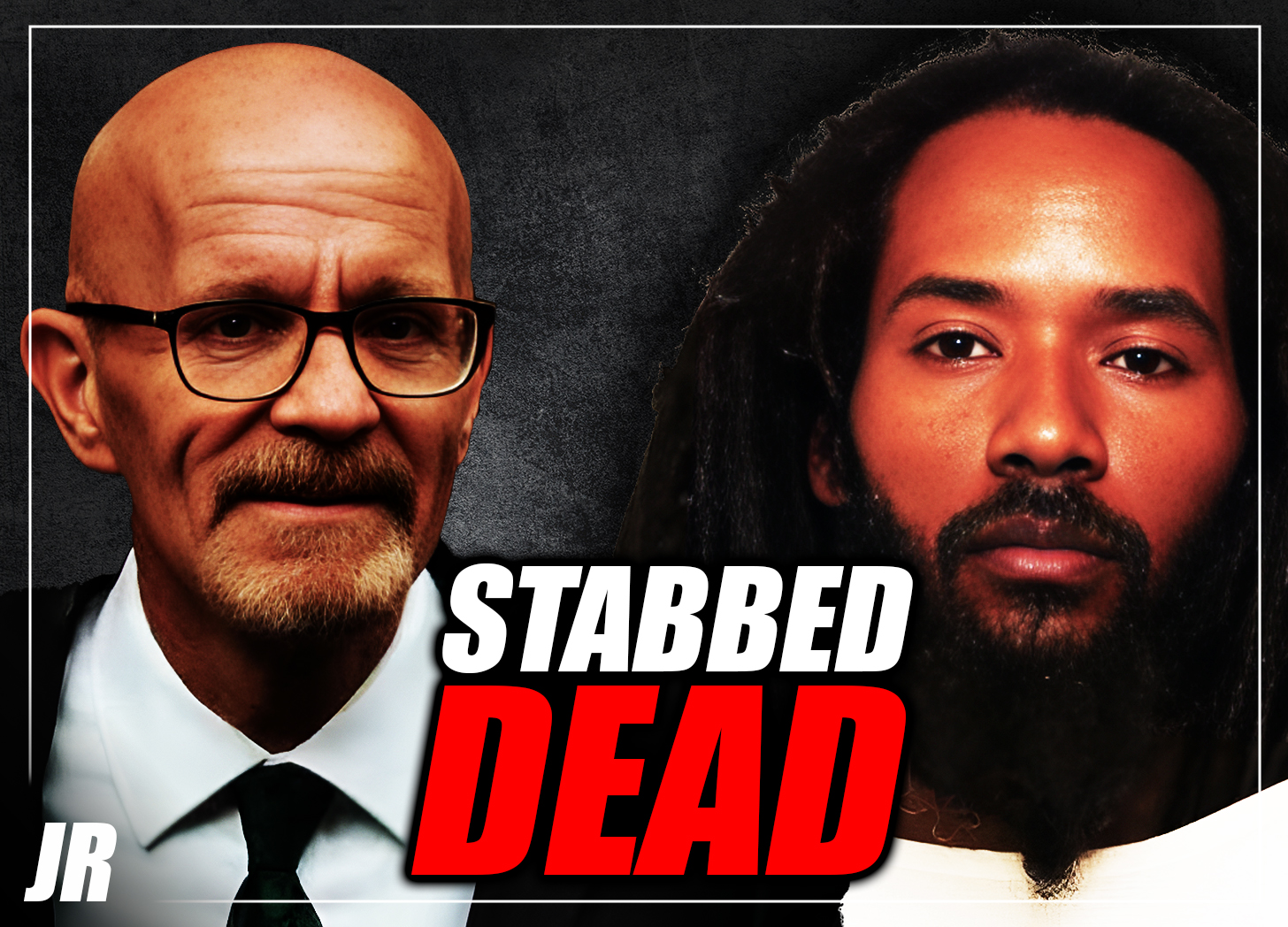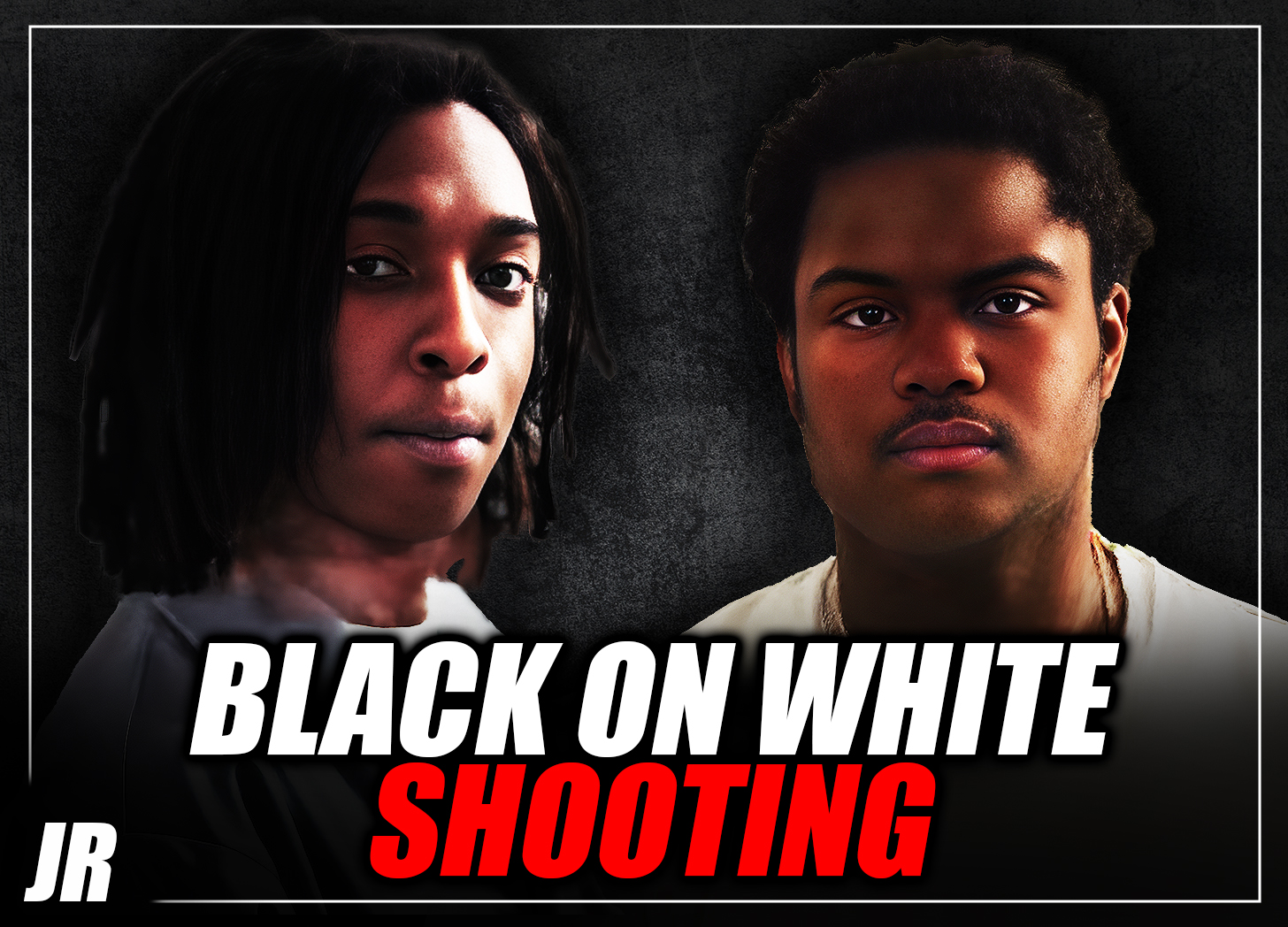A White man was allegedly beaten to death by fellow inmates over prison food at a West Virginia lockup, making him the fourth dead White person within a year at one of America’s most racially oppressive jails.
46-year-old Alvis Shrewsbury—who died within 19 days of being locked up while awaiting a court hearing for a non-violent crime—is the latest casualty to come out of the infamous Southern Regional Jail, a facility in West Virginia marred by controversy and operated by a department responsible for serving a majority White prison population.

While the exact cause of death is still unknown, the victim’s family alleges that Alvis Shrewsbury was beaten to death by fellow inmates in one of the facility’s “pods” over food. They claim that Mr. Shrewsbury, who had turned himself in and was currently incarcerated pending a trial for a non-violent DUI charge on August 29th, was regularly harassed and beaten during his 19-day stay at Southern Regional, and was refused medical attention from jailhouse administrators.
Video calls, which were placed between Mr. Shrewsbury and his family every day since he had been arrested, allegedly showed a sharp decline in his health and physical well-being.
One week before his death on September 10th, his family noted that Alvis kept his head down during the call, evidently trying to conceal a black eye and bruised face gained from savage beatings behind the scenes.

On top of the more apparent signs of distress, the victim reported to his family several major health issues he developed during his stay at Southern Regional. During video calls, he claimed his ribs had been broken, he experienced difficulty breathing and also found himself constipated for more than a week. All of his symptoms, they claim, were left untreated.
“After we were talking to him on the 10th (of September), he’d already been beaten. His face was black…He was telling us about his ribs being broken. It was hard to breathe. He hadn’t had a bowel movement in over a week and nothing was being done about it. He was calling the nurse’s station for help.”
Miranda Smith, Alvis Shrewsbury’s Daughter
Then, early that Saturday, the Shrewsbury family received a visit from a Wyoming County Sheriff’s deputy informing them that Alvis, a beloved father, brother, and husband, had died after being transferred to Beckley Appalachian Regional Hospital. Saddened, the family received a letter from Alvis later that weekend, arriving after his death. It read, “Can’t wait until I get out. I love you all and I miss you all.”
Alvis’s sudden demise has rocked the community ever since, and it’s left a grieving family with many unanswered questions. How did Alvis die? Why wasn’t he treated for his many injuries by medical staff? Why did the state fail to provide safe, secure, and humane supervision of an offender committed to their custody and care?
“Our highest priority is the protection of the public, staff and offenders through the highest degree of professional performance at all times.”
West Virginia’s Division of Corrections Core Value #1: Offender Orientation Manual, Page 6
While the State of West Virginia is still investigating and has yet to release an official cause of death, the family is seeking justice in any way they can. They plan to have an independent autopsy performed to contest the State’s findings, hiring a legal council to begin the process.
Meanwhile, they’ve sounded a clarion call on Facebook, asking others to pressure Democratic Senator Joe Manchin—and Merrick Garland’s US Department of Justice—to demand a federal investigation to find out what is going on inside Southern Regional Jail.
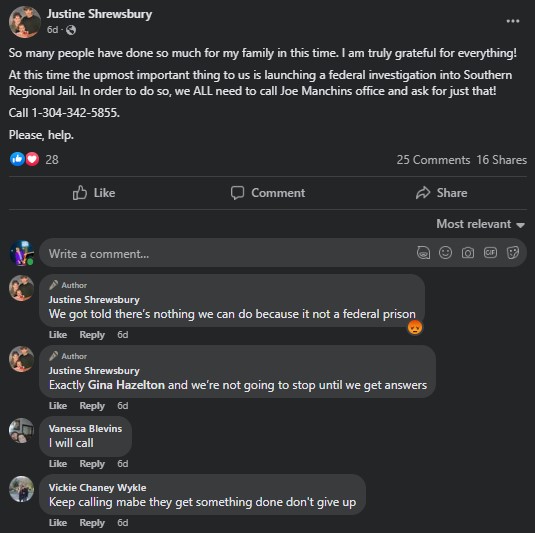
So far, they’ve received nothing but the cold shoulder. According to Facebook posts by the Shrewsbury family, however, the effort was quickly rebuffed. “We got told there’s nothing we can do because it’s not a federal prison,” Justine Shrewbury commented. “and we’re not going to stop until we get answers.”
The Justice Report has contacted numerous members of the Shrewsbury family for a statement, but we are still waiting for a response.
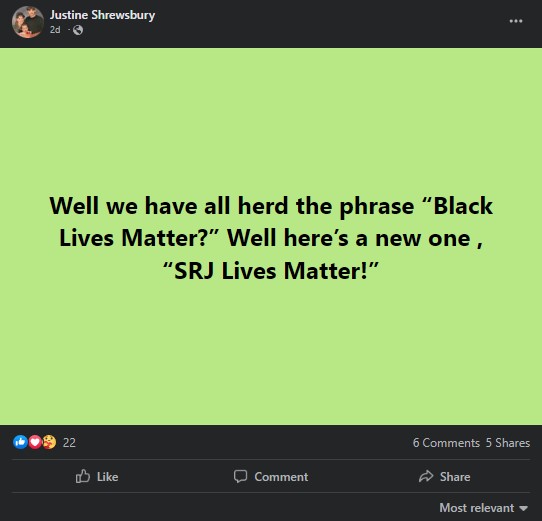
Southern Regional Jail: An Anti-White Dungeon
But while the alleged negligence of a State entity leading to the death of a non-violent offender might sound like big news, the passing of Alvis Shrewsbury is just the tip of the iceberg.
Shrewsbury is the fifth inmate to die at Southern Regional Jail within a year. Of the five dead inmates, four have been White men.

In September of 2021, security staff found 55-year-old Kyle “Steven” Robinson unresponsive in his cell. He was a non-violent offender who failed to show up to court and was arrested pending trial. In October, 57-year-old John Lewis Jarrell died after only a week of being incarcerated, also for failing to show up to court.
Then, in March of 2022, 45-year-old Richard “Ricky” Wriston, died after only spending one day inside Southern Regional, and those close to the matter believe he—like Shrewsbury—was medically neglected.
Back in 2019, White inmate Kevin Brent Whittaker was beaten to death by five other inmates during his incarceration at Southern Regional. A criminal complaint states that he lost consciousness while waiting to receive medical attention. On August 2nd, the skeletal remains of a former inmate, White 24-year-old William “Dustin” Bowen, were discovered in the woods of West Virginia.
He had been released from Southern Regional after serving time for an acute mental health episode on July 7th. His family claims that failing to receive mental health care at SJR, as well as poor post-release policies, led to his avoidable death.
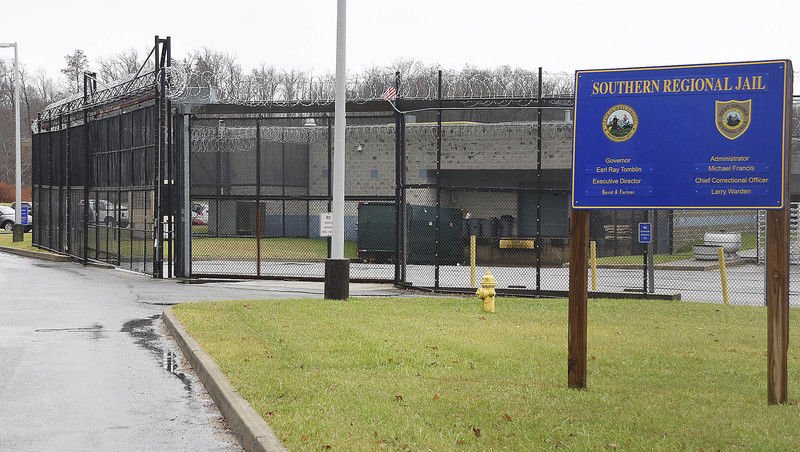
Until Shrewsbury, however, media attention covering the many deaths to come out of Southern Regional has primarily gone unreported. It wasn’t until the March 1st death of Quantez Burks—who is Black—did the media first begin to take notice of the many systemic failures of the jail.
Burks was considered a violent offender and was arrested on a wanton endangerment and police interference charge. An autopsy report indicated he died of blunt force trauma while incarcerated and was reportedly “combative” with security staff during the entirety of his incarceration.
His death sparked a Racial firestorm within the Black community. Unlike the White families of Robinson, Jarrell, Wriston, and Shrewsbury, he secured financial and legal support from the local chapter of the NAACP and notorious Black “civil rights” attorney Ben Crump.
Crump, who has represented the families of Ahmaud Arbery, Breonna Taylor, and George Floyd, is known as “Black America’s attorney general” for his involvement in many high-profile cases of alleged police misconduct. When compared to the Facebook call-in campaigns to the office of Joe Manchin being conducted by the family of Alvis Shrewsbury, the difference in support being offered appears staggeringly disproportionate and entirely based on racial lines.
One group of Americans is clearly getting support and exposure for their injustices, while another appears to be left to fend for themselves.

Deaths of inmates are not the only concern that has the people of West Virginia up in arms over its Southern Regional Jailhouse, however. A slew of other alleged issues stemming from crippling staff shortages, crumbling infrastructure, and the lack of basic water amenities has placed the jail at the very top of a long list of America’s most controversial lockups.
Unexplained deaths are also common at Southern Regional, from suspicious suicides to deadly inmate-on-inmate assaults. Commenting on the death of one prisoner who was left to die in a holding tank at the facility, one activist commented that “the dogs at the animal shelter get better treatment than the inmates at South Regional in Beaver, W.V.”
Jail Death and Injury Law .com
In 2014, the jail was rocked with accusations of cruel and unusual punishment at the hands of the facility’s “Special Response Team” (SRT). In a shocking video clip, originally obtained by Eyewitness News, the exact moment can be seen when White inmate Barry Yearout was brutally shot by an SRT member with non-lethal ammunition long after he had already complied and was laying face down on the floor. The raid called the “shakedown,” was conducted by SRT and included the use of tasers, bean bag shotguns, and stun grenades.
The raid culminated in a civil suit, which was eventually settled out of court in favor of the grieved inmate. As it turns out, Inmate Yearout, pictured below, was not even the main target of the shakedown, yet the SRT appeared to treat him like a target to be neutralized regardless.

The heat has reached such a boiling point that, as of August 11th, Republican Governor Jim Justice issued a state of emergency for West Virginia. This will allow him to deploy members of the National Guard for up to one year in an effort to curb the growing staffing inadequacies inside many of West Virginia’s jails and prisons. In some areas, the correctional officer vacancy rate is as high as 64%.
On September 22nd, a federal civil rights lawsuit was eventually filed, but not on behalf of any of the victims or their families specifically (ala Ben Crump). Instead, the lawsuit was filed by a band of independent attornies seeking damages on behalf of a mob of hundreds of inmates—and even some corrections officers—who have stepped forth to sound the alarm and testify on the jail’s allegedly inhumane conditions.
“At what levels were decisions being made not to spend money on things like broken toilets, showers, bunks, or another facility to alleviate the 150 percent overcrowding? We’re going to get answers in this litigation.”
Attorney Steve New
The lawsuit and the allegations of poor conditions at the jail directly contradicted the results of an internal review of the Southern Regional Jail that was concluded in April. After some inmates and officers came to the media with concerns, The West Virginia Department of Homeland Security investigated and cleared the jail of any misconduct.
Jim Sandy, a lead investigator, claimed that the allegations were “simply not true” and that the inmates who sparked the investigation were most likely “an attempt by some inmates and their family and friends to use the news media to spread false and misleading information as a means of getting released.”
The Justice Report has contacted the West Virginia Division of Corrections and Rehabilitation for comment and is still waiting for a response.
The Mass Incarceration of Whites in the State of West Virginia
One only needs to look at the numbers to truly understand the kind of misery that a controversial dungeon like West Virginia’s Southern Regional Jail is imposing on the White community as a whole.
According to the non-profit research group the Prison Policy Initiative, West Virginia’s incarceration rate stands out internationally as one of the highest on the planet. By using data gained from the 2010 U.S. Census, it was able to determine that White people make up 93% of the population of West Virginia and a whopping 63% of the incarcerated population spread out across all detention and correctional facilities.

While this does mean that Black people are technically overrepresented in West Virginia’s prisons and jails—only 3% of the total population while still maintaining 28% of the incarcerated population—it’s the bodies of dead White people, not Black ones, that continue to be wheeled out of places like Southern Regional Jail at a regular basis.
Because of West Virginia’s prominent location at the heart of America’s longstanding opioid crisis, many White people who pass through West Virginia’s correctional system are those who are suffering from the symptoms of severe drug addiction. According to the CDC, Raleigh, West Virginia—where Southern Regional Jail is located—had a retail opioid dispensing rate of 56.5 per 100 people.
Once locked up, these people are often left with only meager drug treatment programs to help them through withdrawals, forcing indignant, poverty-stricken White inmates to either languish in pain and discomfort while incarcerated or continue using drugs. If they choose the latter, they then get caught up in the dangerous game of prison contraband, and risk being preyed upon by powerful inmates, ruthlessly disciplined by security staff, or could even overdose.
The opioid crisis, which is widely understood as a phenomenon that disproportionately affects White people across the Western world, was first set in motion with the invention of the prescription painkiller OxyContin. Perdue Pharma and its owners, the billionaire Sackler family—which is Jewish—were once ordered to pay six billion dollars after a lawsuit found them liable for their role in the crisis as the makers of the drug.
Despite 760,000 people having died to this day due to the opioid crisis, the Sackler family continues to deny any wrongdoing.
With White people holding the lion’s share of prison and jail cells within the state of West Virginia, and with conditions so poor inside that it’s triggered federal lawsuits, the evidence is mounting that would suggest that the state itself is systemically anti-White. Locked in a vicious cycle of crime, drug abuse, and neglect by a controversial correctional institution, White inmates who are wronged and the families that suffer with them find that advocates are a rare commodity.
But where is the outrage? Where is the nationwide demand for prison reform? While White men are shuffled in and out of the West Virginia correctional machine like a revolving door that grinds them into dust—some never making it out alive—the media largely remains quiet about it.
Compare what is going on at Southern Regional to the state of Alabama’s prison system. At the same time the Southern Regional Jail tragedies were unfolding, the inmates in Alabama began an ongoing state-wide prisoner strike and are currently receiving widespread coverage by major news companies!

The reason for this also appears to be due in part to demographics. Using the same data gathered by the Prison Policy Initiative, we can see that, unlike in West Virginia, Blacks comprise the majority of the incarcerated population at a much larger 54% in Alabama.
There is an apparent double standard in media reporting and outrage in the wake of human rights violations, and alleged state wrongdoing inside jails and prisons is only promoted when the victims are majority Black.
In fact, a quick search of “Southern Regional Jail” on the website of the New York Times makes zero mention of the Alvis Shrewsbury case or any of the other murders for that matter. Instead, you will find loads of articles from the Times’ archive about “negro” prisoners.
Some stories, like one from 1961 with text that reads, “4 Negroes choose jail rather than pay fines as “jail-in” movement starts,” are quite telling in and of themselves, indicating that stories of the welfare of Black prisoners in 1961 are overshadowing modern acts of anti-White barbarity to this day.
Instead, we are only told the tale of men like Alvis Shrewsbury—who, for all intents and purposes, received the death penalty for a non-violent DUI offense—through the lens of local news affiliates and state-level newspapers.
Four dead White men have come out of Southern Regional within a year—many of them reportedly denied basic health care while incarcerated. With no sign of the opioid crisis coming to a close, the mass incarceration of poverty-stricken White Americans across the red state of West Virginia appears as if it will, unfortunately, continue for the foreseeable future, and its White, working-class families will continue to feel that hardship exclusively.
Have a story? Please forward any tips or leads to the editors at [email protected]

















